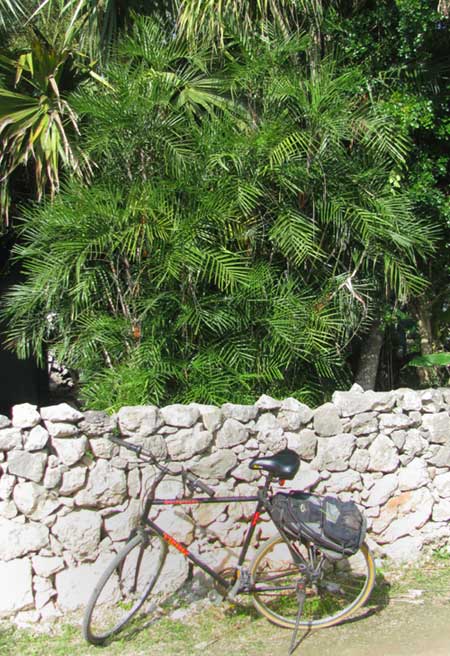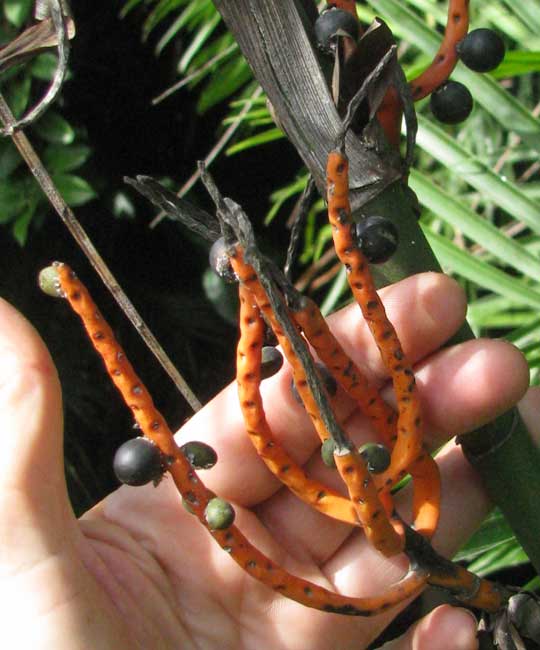Excerpts from Jim Conrad's
Naturalist Newsletter
from the November 27, 2011 Newsletter issued from Hacienda Chichen Resort beside Chichén Itzá Ruins; limestone bedrock; elevation ~39m (~128ft), N20.675°, W88.569°; central Yucatán state, MÉXICO
BAMBOO PALM
Just inside a stone fence in Pisté grew the palm shown below:

It was fruiting in a rather colorful way, shown below:

When you see smallish, feather-fronded palms with relatively narrow, stiff but not spiny frond segments like these growing in dense clumps and with flowers and fruits in such inflorescences as the thick-stemmed, orange one in the picture, in our part of the world you should think "genus Chamaedorea." If you're into ornamental palms that's an important genus to know because it contains several species sold commercially on a very grand scale as "parlor palms" suitable for growing in pots up north. Walk into almost any gringo mall and there'll be parlor palms everywhere, though seldom as large as in the picture.
The species shown is known as Bamboo Palm or Reed Palm. It's CHAMAEDOREA SEIFRIZII, a native to southern Mexico and Central America, where it thrives as an understory species in the shade. A Chamaedorea species grows in our local woods, especially around old ruins, but so far all I've found have been too young to flower, so I can't confirm their identity. However, Chamaedorea seifrizii is the only Chamaedorea species I find listed for this area. The Maya call it Xyaat. I suspect that I find only immature plants because people rob larger ones, same as they do orchids and parrots.
In fact, back during my days in the Petén of northern Guatemala, in the 1970s, the forest floor in many areas was well populated with various Chamaedorea species, but already they were disappearing. People cut them and air-shipped them north in bundles to serve as non-wilting greenery in floral arrangements. At least back then a funeral wasn't a funeral without Chamaedorea fronds forming a background for flowers. The Petén's species were different from ours, though: They were C. elegans, C. ernesti-augustii, and C. oblongata.
People back in Guatemala called their Chamaedoreas Shate (SHA-teh), written in the Maya way as Xate, which is close to our Xyaat. Men who collected Shate were known as shateros. The immature, unopened inflorescences of shate species, known as pacayas, were rather like small ears of corn in green husks and were collected, boiled and eaten. Often pacayas were sold in traditional markets. The Maya here at the hotel haven't heard of eating the immature inflorescences of C. seifrizii, and I suspect that if they were good, our Maya would know about it. One Internet page declares that the species' mature fruits are very toxic.